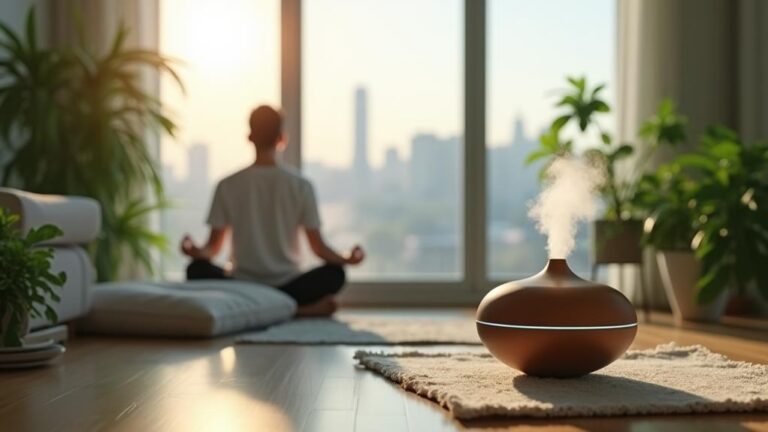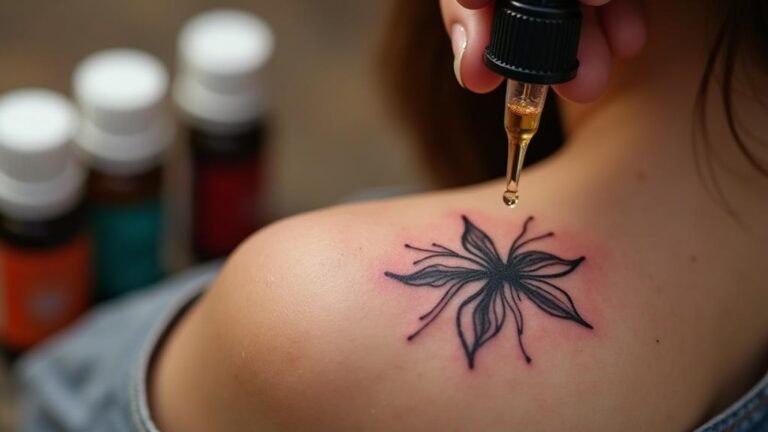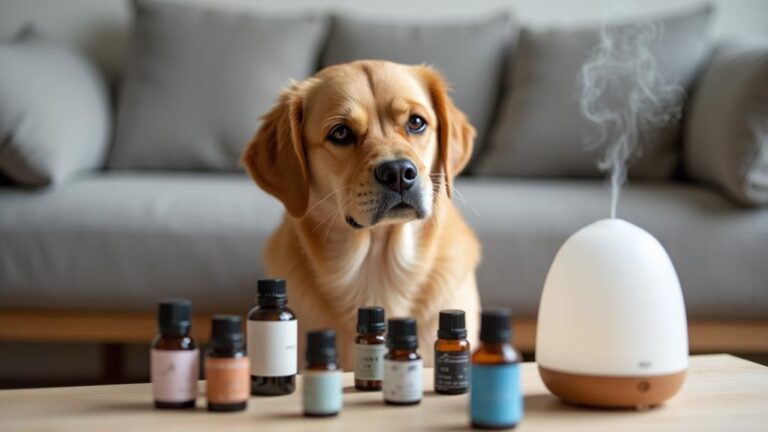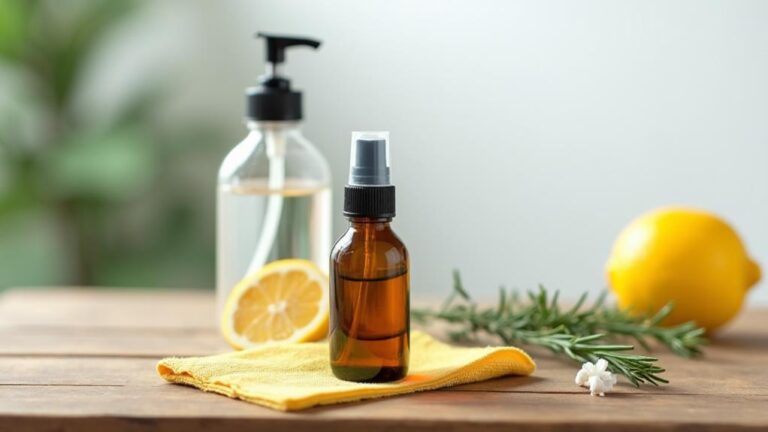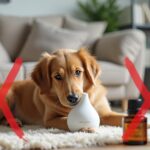You've likely encountered a stubborn essential oil bottle cap at some point, struggling to twist it open without spilling a single drop. If you're tired of wrestling with these tiny bottles, there's good news: you're not alone, and there are easier ways to get the job done. From heat to specialized tools, you've got options to make opening essential oil bottles a breeze. But which method is right for you, and how do they work? Let's explore five simple techniques to help you conquer even the most stubborn caps.
Key Takeaways
- Applying heat to the cap and bottle interface can loosen the seal, making it easier to open the essential oil bottle.
- Using a rubber grip material, like a rubber band or cloth with rubber backing, can provide a better grip to twist the cap.
- An essential oil bottle opener is a specialized device that simplifies the process of accessing essential oils with ease and comfort.
- Wrapping a damp cloth around the bottle can provide extra grip to twist the cap off, making it a simple and effective solution.
- Combining a cloth with pliers or a wrench can offer the traction and mechanical advantage needed to open stubborn essential oil bottles.
Using Heat to Loosen Caps
Friction can be a formidable foe when trying to open essential oil bottles, but a gentle nudge from heat can often help.
By applying heat to the cap and bottle interface, you can increase the thermal expansion of the materials, making it easier to break the seal. This method is particularly effective for bottles with stuck or stubborn caps.
To use heat to loosen caps, you can try two methods. First, submerge the bottle in warm water for a few minutes.
The warmth from the water will seep into the cap and bottle, loosening the adhesive properties that keep the cap in place. Alternatively, you can use a hair dryer to heat the cap and surrounding area.
Be cautious not to apply too much heat, as this can damage the bottle or cause the essential oil to degrade.
When using heat to loosen caps, it's crucial to be patient and gentle.
Avoid using excessive force or heat, as this can cause more harm than good. Instead, apply gentle pressure while rotating the cap, and it should come loose with ease.
Rubber Grip Method
When a stubborn cap is refusing to budge, consider adding some extra traction to the mix with the Rubber Grip Method. This technique involves wrapping a rubber material around the cap to provide a better grip.
You can use a rubber band, a rubber grip strip, or even a cloth with rubber backing. The key is to find a material that provides enough friction to allow you to twist the cap without slipping.
To apply the Rubber Grip Method, start by selecting a suitable rubber material. Cut it to the desired size, making sure it's large enough to wrap around the cap.
Wrap the material around the cap, overlapping the edges to create a secure grip. Now, use your grip techniques to twist the cap while holding the bottle firmly. The rubber material should provide enough traction to loosen the cap.
If you don't have a rubber material, you can also use rubber alternatives like silicone or latex. These materials can provide a similar grip to rubber and can be just as effective.
Essential Oil Bottle Opener
Using a dedicated tool specifically designed to open stubborn essential oil bottles can be a game-changer. An essential oil bottle opener is a specialized device that simplifies the process of accessing your oils. Typically, this tool consists of a compact, ergonomic design that allows for comfortable grip and ease of use.
By leveraging mechanical advantage, the opener reduces the effort required to twist and remove the cap, making it ideal for those with limited dexterity or who struggle with stubborn bottles.
When shopping for an essential oil bottle opener, look for one with a durable construction and a design that accommodates various bottle sizes.
Some openers feature an automatic bottle gripping mechanism, which securely holds the bottle in place while you twist the cap. This feature can be particularly helpful for those with arthritis or other hand mobility issues.
Damp Cloth Technique
Wrapping a stubborn essential oil bottle with a damp cloth can provide the extra grip you need to twist the cap off. This simple technique relies on the increased friction between the cloth and the bottle, making it easier to turn the cap.
To use the damp cloth technique, start by selecting a suitable cloth.
When choosing a cloth, consider the following factors:
- *Absorbency*: A highly absorbent cloth can hold more water, reducing the risk of drips and spills.
- *Grip*: A cloth with a textured or rubberized surface can provide a better grip on the bottle.
- *Size*: A cloth that covers the entire bottle can provide more even pressure and better grip.
- *Material*: A microfiber cloth is a good option, as it's gentle on the bottle and can provide a secure grip.
If you don't have a suitable cloth, you can also use damp cloth alternatives, such as a rubber band or a silicone cap grip. However, a cloth is often more effective and can be used in conjunction with other techniques.
Pliers and Cloth Solution
To tackle particularly stubborn essential oil bottles, you may need to combine the traction provided by a cloth with the mechanical advantage of pliers. This solution requires you to wrap a cloth around the bottle cap and grip it with pliers.
Choosing the right cloth material is vital, as it should provide sufficient grip without slipping or tearing. Microfiber cloths, rubberized cloths, or silicone-coated cloths work well for this purpose.
When selecting pliers, consider needle-nose pliers or lineman's pliers, which offer a secure grip and leverage. If you don't have pliers, you can use alternatives like locking wrenches or adjustable wrenches.
Verify the pliers or wrenches are securely gripping the cloth-covered cap to avoid slipping and damaging the bottle.
To execute this method, wrap the cloth around the cap, leaving a small portion exposed for gripping.
Grip the cloth-covered cap with your pliers or wrenches, making sure not to squeeze too hard and damage the bottle.
Twist the pliers or wrenches while maintaining a firm grip on the cloth to loosen the cap.
With patience and careful application of force, the cap should come loose, allowing you to access the essential oil.
Frequently Asked Questions
Can I Use Essential Oils Near Open Flames?
When using essential oils near open flames, you're increasing flame risks, so exercise caution. However, you can still enjoy a strong scent throw from diffusers or candles specifically designed for essential oil use.
Are Essential Oil Bottles Safe for Dishwasher Use?
You're traversing Dishwasher Safety like a ship charting unexplored waters. Check the bottle material – glass is usually safe, but plastic or metal may contain chemicals that can leach into your oils during the wash cycle.
How Long Do Essential Oils Typically Remain Potent?
You'll find essential oils typically remain potent for 1-3 years, depending on oil quality and storage methods. If stored properly in a cool, dark place, they can retain their efficacy for an extended period.
Can I Use Expired Essential Oils Safely?
Don't cry over spilled milk, but think twice before using expired essential oils – their potency and safety can be compromised due to oil degradation over time, affecting their essential oil shelf life and efficacy.
Are Essential Oils Suitable for Children and Pets?
You must research essential oils' Child Safety and potential Pet Toxicity before use, as some oils can cause skin irritation or allergic reactions in kids, and toxicity or even organ failure in pets if ingested.
Conclusion
With these five flexible fixes, you'll find frustration-free ways to fling open those finicky essential oil bottles. By harnessing heat, leveraging rubber grips, or employing specialized openers, the once-stubborn seal gives way with ease. Alternatively, clever cloth-based contraptions or pliers paired with a protective cloth provide a secure solution. Master these methods, and you'll be effortlessly extracting your essential oils in no time.




